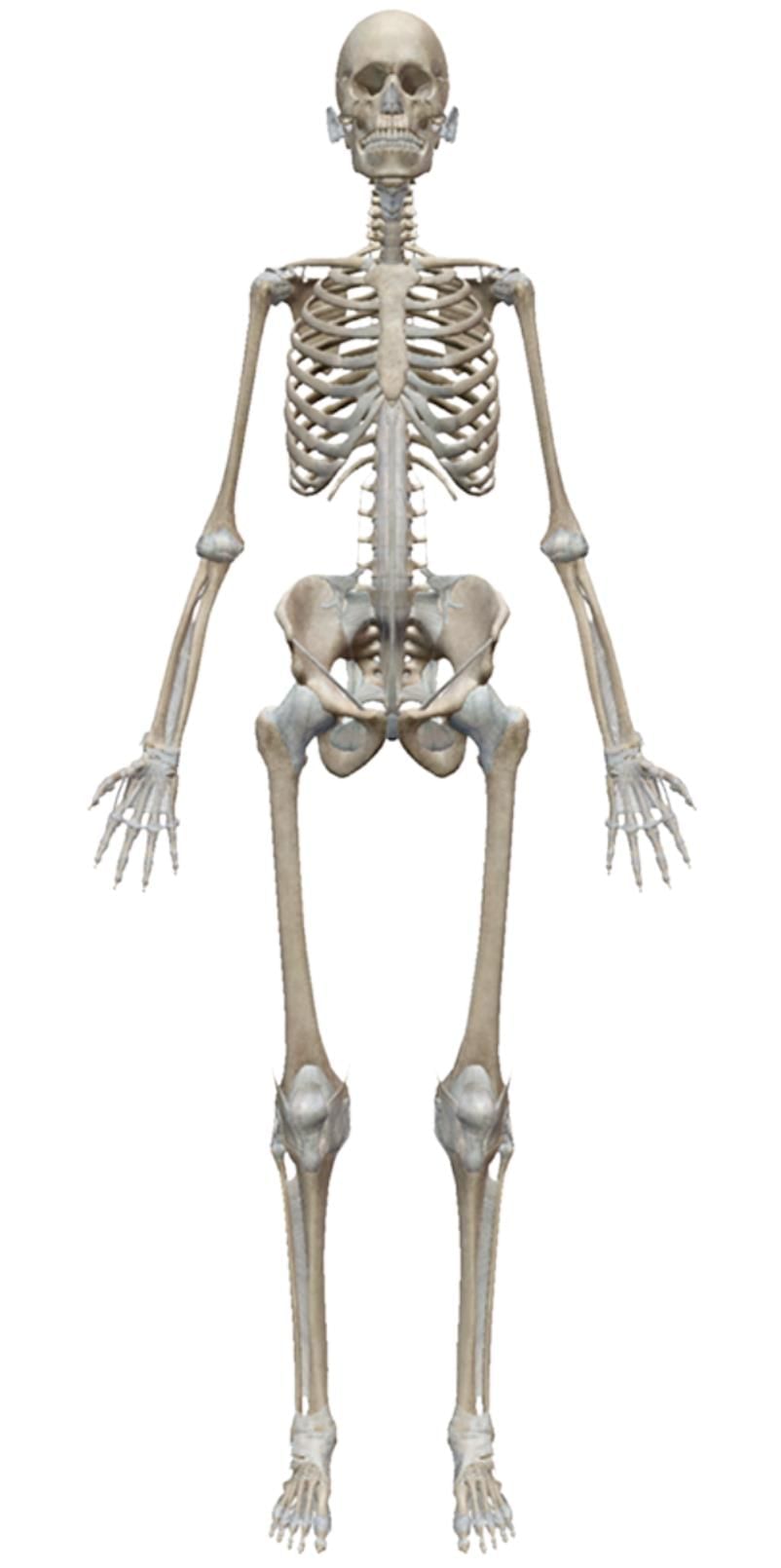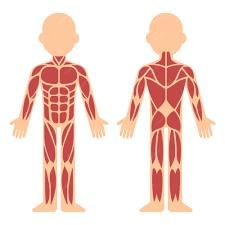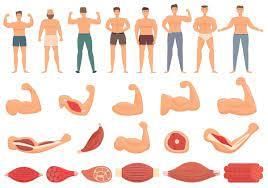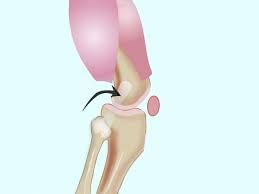Skeletal and Muscular System - 1 Class 5 Worksheet Science
Q1: Multiple Choice Questions (MCQs)
(i) Which of the following is a function of the skeletal system?
(a) Produces body heat
(b) Provides support and shape to the body
(c) Stores fat
(d) Controls body temperature
Ans: (b)
The skeletal system provides support and shape to the body by forming its structural framework. It also protects vital organs and helps in movement.
 Skeletal System
Skeletal System
(ii) How many bones are there in the human body?
(a) 206
(b) 215
(c) 220
(d) 230
Ans: (a)
There are 206 bones in the human body. These bones provide support and protection to the body and its vital organs. They also aid in the movement of the body.
(iii) What type of joint allows maximum movement?
(a) Hinge joint
(b) Pivot joint
(c) Ball-and-socket joint
(d) Gliding joint
Ans: (c)
Ball-and-socket joints, like the hip and shoulder joints, enable a wide range of motion, allowing the bones to move in multiple directions.
(iv) Which of the following is a type of muscle found in the body?
(a) Cardiac muscle
(b) Sinew muscle
(c) Plasma muscle
(d) Bone muscle
Ans: (a)
Cardiac muscle is a type of muscle found in the heart. It is responsible for pumping blood throughout the body. Other types of muscles found in the body include skeletal and smooth muscles. Muscles in a Human Body
Muscles in a Human Body
(v) What is the longest bone in the human body?
(a) Tibia
(b) Femur
(c) Humerus
(d) Ulna
Ans: (b)
The femur, also known as the thigh bone, is the longest bone in the human body. It extends from the hip to the knee and is responsible for supporting the weight of the body.
Q2: Fill in the blanks
(i) The human body has _____ bones.
Ans: The human body has 206 bones.
(ii) Bones are connected to each other by ____.
Ans: Bones are connected to each other by joints.
(iii) The _____ is the longest bone in the human body.
Ans: The femur is the longest bone in the human body.
(iv) The _____ is responsible for protecting our brain.
Ans: The skull is responsible for protecting our brain.
(v) Muscles are attached to bones by _____.
Ans: Muscles are attached to bones by tendons.
Q3: Match the column

Ans: (i) - (b) Protect the brain
The skull is a bony structure that surrounds and protects the brain from injury.
(ii) - (d) Upper arm bone
The humerus is the long bone in the upper arm, connecting the shoulder to the elbow.
(iii) - (a) Upper leg bone
The femur is the longest bone in the human body and is located in the upper leg.
(iv) - (c) Lower leg bones
The tibia and fibula are the two bones in the lower leg. The tibia is the larger, weight-bearing bone, while the fibula is the smaller, non-weight-bearing bone.
(v) - (e) Lower jawbone
The mandible is the lower jaw bone and is responsible for the movement of the lower jaw during talking and chewing.
Q4: True or False
(i) Bones produce blood cells.
Ans: True
Bones produce blood cells in the bone marrow, which is the soft, spongy tissue found in the center of bones.
(ii) There are 107 bones in the human body.
Ans: False
There are 206 bones in the human body, not 107.
(iii) The smallest bone in the human body is the femur.
Ans: False
The smallest bone in the human body is the stapes. It is a tiny bone in the middle ear that helps carry sound from the eardrum to the inner ear.
 Human Ear
Human Ear
(iv) Muscles can only push, not pull.
Ans: False
Muscles can only pull, not push. They work in pairs, with one muscle contracting (shortening) while the other muscle relaxes (lengthens) to create movement.
(v) There are two types of muscles: voluntary and involuntary.
Ans: True
There are two types of muscles: voluntary muscles, which are controlled consciously and can be moved at will (e.g., skeletal muscles), and involuntary muscles, which are not under conscious control and move automatically (e.g., smooth muscles in organs and blood vessels).
Q5: Arrange in Correct Order
(i) Arrange the following bones in the correct order, from the top of the body to the bottom:(a) Skull
(b) Spine
(c) Femur (thigh bone)
(d) Ankle bones
Ans: a) Skull → (b) Spine → (c) Femur (thigh bone) → (d) Ankle bones
The skull is at the topmost part of the body, followed by the spine (vertebral column), then the femur (thigh bone), and finally, the ankle bones.
(ii) Arrange the following muscle types in the correct order, from largest to smallest in size:
(a) Cardiac muscles
(b) Skeletal muscles
(c) Smooth muscles
Ans: b) Skeletal muscles →(c) Smooth muscles → (a) Cardiac muscles
Skeletal muscles are the largest type of muscles, followed by smooth muscles, and then the cardiac muscles, which are found in the heart.
 Different muscles in a Human Body
Different muscles in a Human Body
(iii) Arrange the bones in the correct order of their position in the human body from bottom to top.
(a) Hindlimbs
(b) Femur
(c) Ribs
(d) Skull
Ans: Hindlimbs → Femur → Ribs → Skull
- The hindlimbs (including foot bones, tibia, fibula, and femur) are the lowest, as they start at the feet.
- The femur, as part of the hindlimb, is above the foot and lower leg bones but below the pelvis.
- The ribs are in the chest, above the pelvis and lower limbs.
- The skull is at the top.
(iv) Arrange the parts of the skeleton in their correct order from top to bottom.
(a) Skull
(b) Ribs
(c) Tibia
Ans: Skull → Ribs → Tibia
The skull is located at the top, followed by the ribs and tibia in the upper abdomen and the lower legs respecitvely.
(v) Arrange the stages of bone formation (ossification) in the correct order:
(a) Tibia and Fibula
(b) Patella
(c) Femur
Ans: Femur → Tibia and Fibula → Patella
The femur is the first to ossify, followed by the tibia and fibula. The patella ossifies later, usually after birth.
Q6: Choose the Odd One Out
(i) Which of the following bones is the odd one out?
(a) Femur (thigh bone)
(b) Ankle Bones
(c) Patella (kneecap)
(d) Ribs
Ans: (d)
Ribs are the odd one out here as they are above the abdomen.
(ii) Which of the following muscles is the odd one out?
(a) Biceps
(b) Femur
(c) Hamstrings
(d) Triceps
Ans: (b)
The femur is the odd one out as the rest of the options are muscles.
(iii) Which of the following bones is the odd one out?
(a) Radius
(b) Ulna
(c) Femur
(d) Humerus
Ans: (c)
The femur is the odd one out as it is located in the leg, while the others are bones of the forearm.
(iv) Which of the following is the odd one out?
(a) Ribs
(b) Hindlimbs
(c) Radius
(d) Heart
Ans: (d)
The heart is the odd one out as it is an organ and the rest of the options are bones.
(v) Which of the following bones is the odd one out?
(a) Skull
(b) Radius
(c) Ulna
(d) Humerus
Ans: (a)
The skull is the odd one out as all the other bones are related to the arm.
Q7: Short Answer Questions
(i) What are the three types of muscles found in the human body?
Ans: The three types of muscles found in the human body are skeletal muscles, smooth muscles, and cardiac muscles.
(ii) What is the function of tendons?
Ans: Tendons are strong, fibrous tissues that connect muscles to bones. Their function is to transmit the force generated by the contraction of muscles to the bones, allowing movement.
(iii) What are the two main parts of the human skeletal system?
Ans: The two main parts of the human skeletal system are the axial skeleton, which consists of the skull, vertebral column, and rib cage, and the appendicular skeleton, which includes the limbs and the pelvic and shoulder girdles.
(iv) What is the difference between voluntary and involuntary muscles?
Ans: Voluntary muscles are muscles that can be consciously controlled, such as the skeletal muscles used in walking, running, or lifting objects. Involuntary muscles are muscles that cannot be consciously controlled, such as the smooth muscles found in the digestive system and the cardiac muscle in the heart. Voluntary Muscles: Allowing movement
Voluntary Muscles: Allowing movement
(v) How do muscles work to produce movement?
Ans: Muscles work to produce movement by contracting and relaxing. When a muscle contracts, it pulls on the bone it is attached to, causing the bone to move. Muscles usually work in pairs, with one muscle contracting while the opposing muscle relaxes, allowing for smooth and controlled movement.
|
42 videos|230 docs|45 tests
|
FAQs on Skeletal and Muscular System - 1 Class 5 Worksheet Science
| 1. What are the main functions of the skeletal system? |  |
| 2. How do muscles work with the skeletal system to enable movement? |  |
| 3. What types of muscles are there in the human body? |  |
| 4. What role do ligaments and tendons play in the skeletal and muscular system? |  |
| 5. How can I maintain a healthy skeletal and muscular system? |  |

















